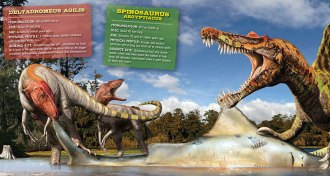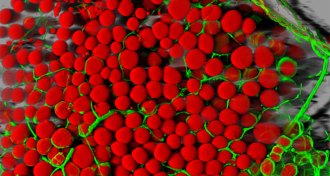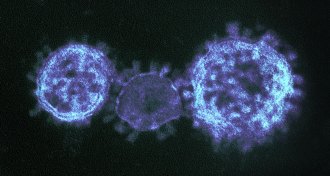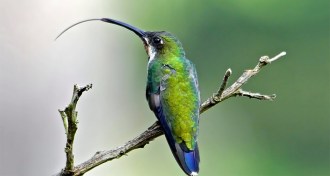Life
Sign up for our newsletter
We summarize the week's scientific breakthroughs every Thursday.
-
 Animals
AnimalsA naturalist recounts birds’ lives in the Scottish Highlands
In Gods of the Morning, a naturalist chronicles how birds and other wildlife withstand the changing seasons in the Scottish Highlands
By Sid Perkins -
 Animals
Animals‘Prehistoric Predators’ is a carnival of ancient dinosaurs, mammals and more
A new children’s book offers gorgeous illustrations and information for everyone about ancient carnivores.
-
 Life
LifeExtinction in lab bottle was a fluke, experiment finds
Extinction in a bottle was a random catastrophe, not survival of the fittest.
-
 Neuroscience
NeuroscienceWhistled language uses both sides of the brain
Unlike spoken words, language made of whistles processed by both sides of the brain.
-
 Animals
AnimalsSeeing humans as superpredators
People have become a unique predator, hunting mostly adults of other species.
By Susan Milius -
 Plants
PlantsWhat fairy circles teach us about science
Science can’t yet tell us how fairy circles form, but that’s not a failure for science.
-
 Genetics
GeneticsGene thought to cause obesity works indirectly
Researchers have discovered a “genetic switch” that determines whether people will burn extra calories or save them as fat.
-
 Health & Medicine
Health & MedicineStiff cellular environment links obesity to breast cancer
Obesity may directly support tumor growth by making a cell’s surroundings stiffer.
-
 Health & Medicine
Health & Medicine‘Vomiting device’ sounds gross but it helps study infections
Scientists created a “vomiting device” to study how norovirus spreads through the air.
-
 Life
LifeExperimental MERS vaccine shows promise
An experimental vaccine against the MERS virus triggers immune protection, a new study finds.
By Nathan Seppa -
 Animals
AnimalsHummingbird tongues may work like micropumps
Hummingbird tongues work as elastic micropumps instead of simple thin tubes, researchers say in latest round of a scientific debate.
By Susan Milius -
 Animals
AnimalsAnother tiny frog species found in sky islands of Brazil
Another new species of miniature frog has been discovered amongst the leaf litter in the high cloud forests of southern Brazil.